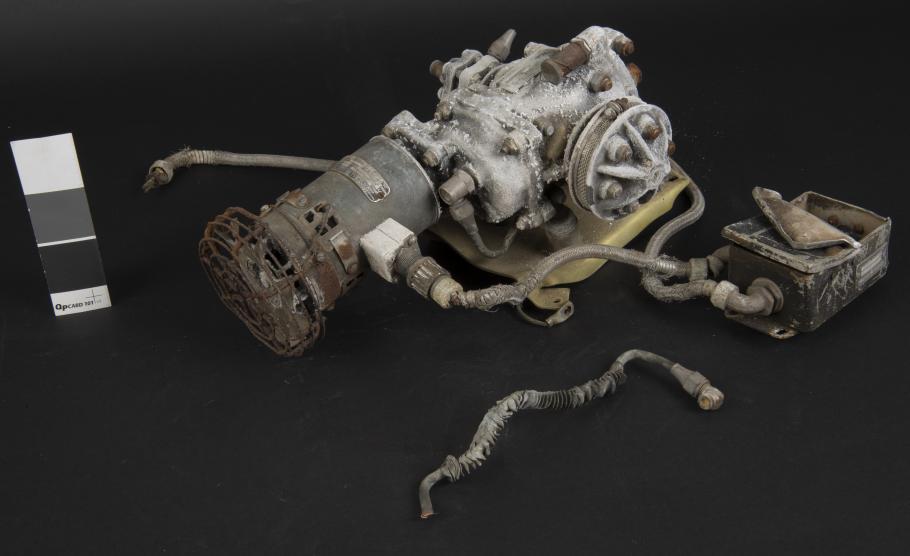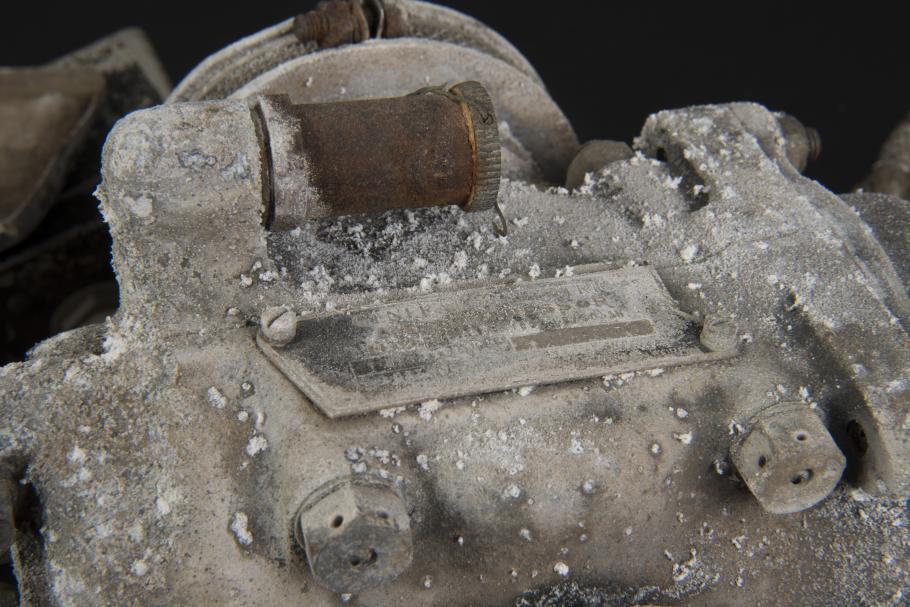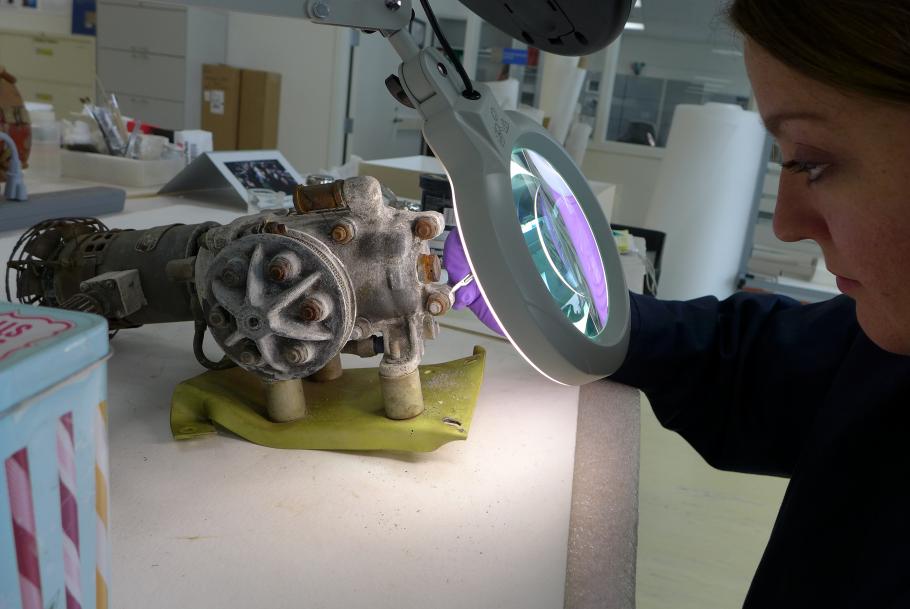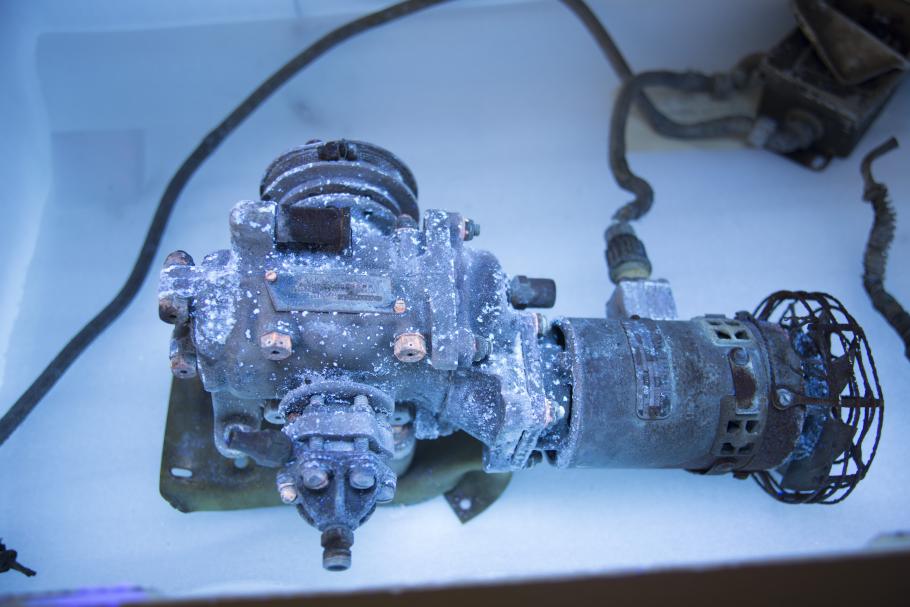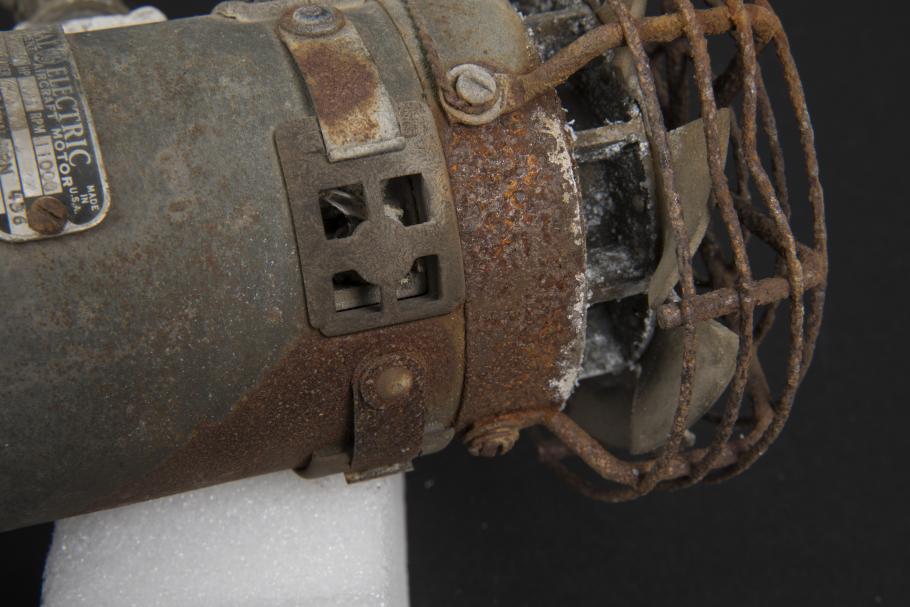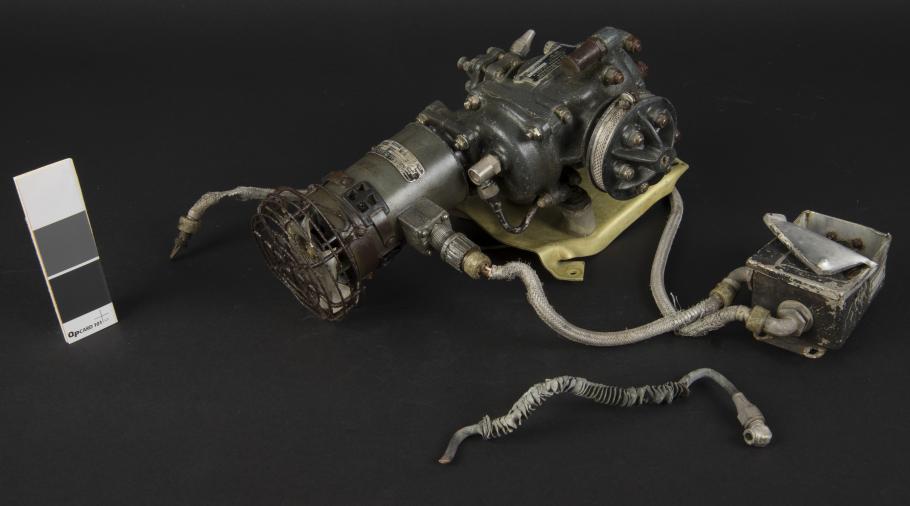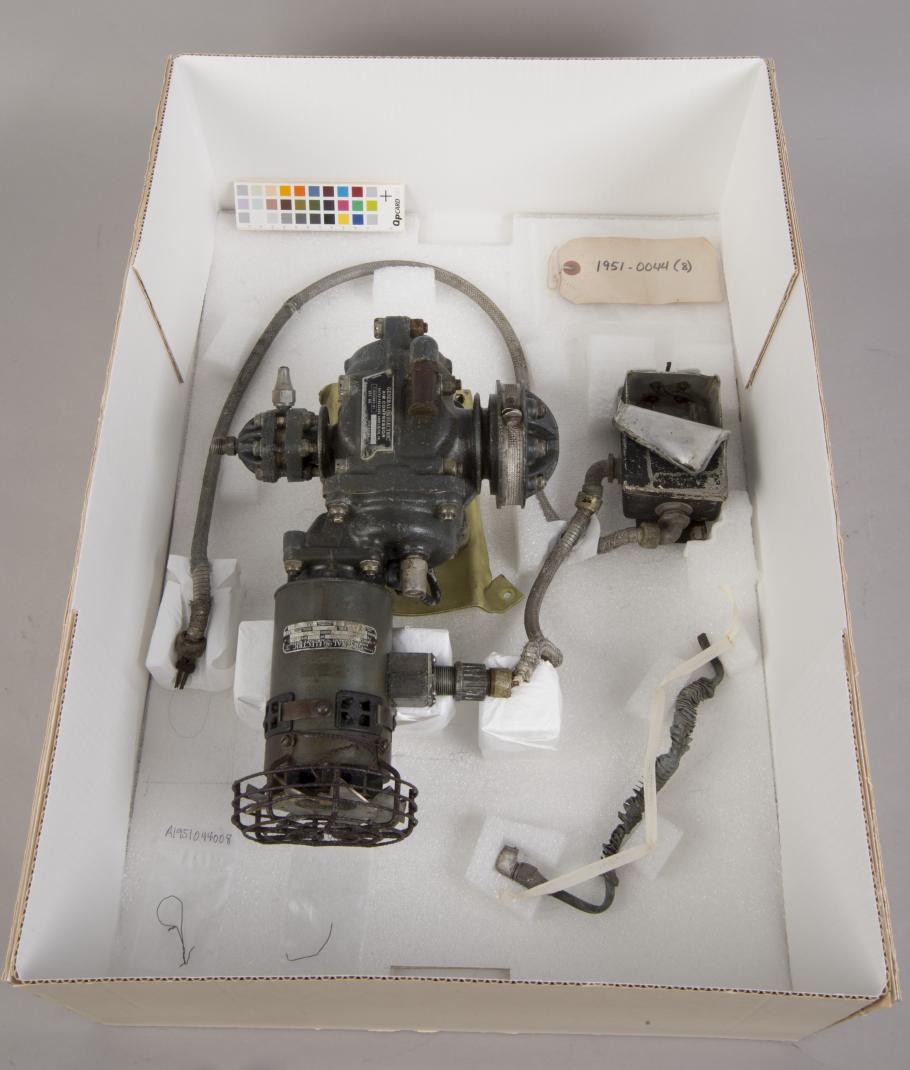The Museum has been tackling a variety of artifact treatments through its Collections Care and Preservation Fund (CCPF) Triage Project. The goal of the project is to stabilize artifacts as they are moved from the Paul E. Garber Preservation, Restoration, and Storage Facility to state-of-the-art storage located at the Steven F. Udvar-Hazy Center in Chantilly, Virginia. The triage project addresses urgent issues affecting artifacts such as active corrosion, pest infestation, biological growth, and physical insecurities.
As a conservation intern with the Museum’s triage team this past summer, I treated objects from both the space and aeronautical collections. One of the more complex and extensive treatments I completed was on a General Electric compressor used in the turret of a WWII-era Northrop P-61C Black Widow, much like the one on view at the Udvar-Hazy Center. The Black Widow was the first of its kind, designed to intercept and attack enemy aircraft at night and in bad weather. After the war, the Museum’s Black Widow was used by the Army Air Forces for inclement weather testing, and consequently it had its top turret removed to make room for weather monitoring equipment. This compressor would have provided the turret with the charge needed to operate the automatic machine gun.
Even though researching the function of each component of this compressor was fascinating, fully grasping each mechanism was not necessary for treating it. The important considerations for treating the compressor were understanding its different corrosion types; determining if the corrosion was active and needed treatment; determining whether or not there were any hazards associated with treating the materials; and deciding how to stabilize the object to inhibit further degradation. Lastly, a support was created so that the object could be safely stored and handled after treatment.
Before treatment, the General Electric Compressor's components were inventoried and inspected.
Before the General Electric Compressor was treated, there was magnesium and ferrous corrosion near I.D. plate.
A literature review of previous tests performed on similar objects provided a useful framework for approaching the conservation treatment of the compressor. For example, like other objects treated in the conservation laboratory, the magnesium corrosion appeared in abundance on the crankcase and pressure cylinders of the compressor as white, fluffy, powdery particulates. To treat the magnesium corrosion, I applied successive grades of metal polish, being sure to clear away the polish between applications. This was followed by many hours of mechanical removal of the corrosion products under magnification using a scalpel and other small hand tools. Due to its elemental properties, magnesium is highly reactive and corrodes very quickly; some of the more deeply pitted areas seemed to regrow the white corrosion overnight!
Carefully cleaning magnesium corrosion under magnification on the General Electric Compressor.
Other corrosion types I addressed were ferrous corrosion and cadmium corrosion. The ferrous metal fittings had once been plated using cadmium, however the plating had largely failed due to corrosion of the underlying metal. It was useful to visually characterize this under long-wave UV illumination as cadmium fluoresces orange under UV light and it is considered hazardous and should be handled with caution.
Before treatment the compressor was viewed under long-wave UV illumination to show hazardous corrosion.
In the areas where cadmium was most likely present, careful clearing (or cleaning away) was performed with deionized water before treating the ferrous corrosion. Reduction (reducing materials) was then completed using cleaning pads in multiple grades, steel wool, and a fiberglass bristle brush and disposed of afterwards in a safe manner.
Before treatment the General Electric Compressor had an area of dark orange ferrous corrosion in need of reduction and stabilization.
Once the corrosion products on the compressor had been reduced, it was necessary to protect the surfaces from further degradation. A penetrating oil and a wax coating were applied as corrosion inhibitors to all the treated areas.
General Electric compressor used in the turret of a WWII-era Northrop P-61C Black Widow after conservation treatment. The Museum has been tackling a variety of artifact treatments through its Collections Care and Preservation Fund (CCPF) Triage Project in an effort to relocate artifacts to state-of-the-art storage at the Steven F. Udvar-Hazy Center in Chantilly, Virginia.
As a final measure, supportive housing was assembled using archival quality materials. This ensures that handling, examination, and potential research can be done without further damaging the object.
To protect the General Electric Compressor, supportive housing was assembled using archival quality materials.
Claire Taggart is a graduate fellow at Winterthur/University of Delaware Program in Art Conservation and was a conservation intern with the Museum in summer 2015.

